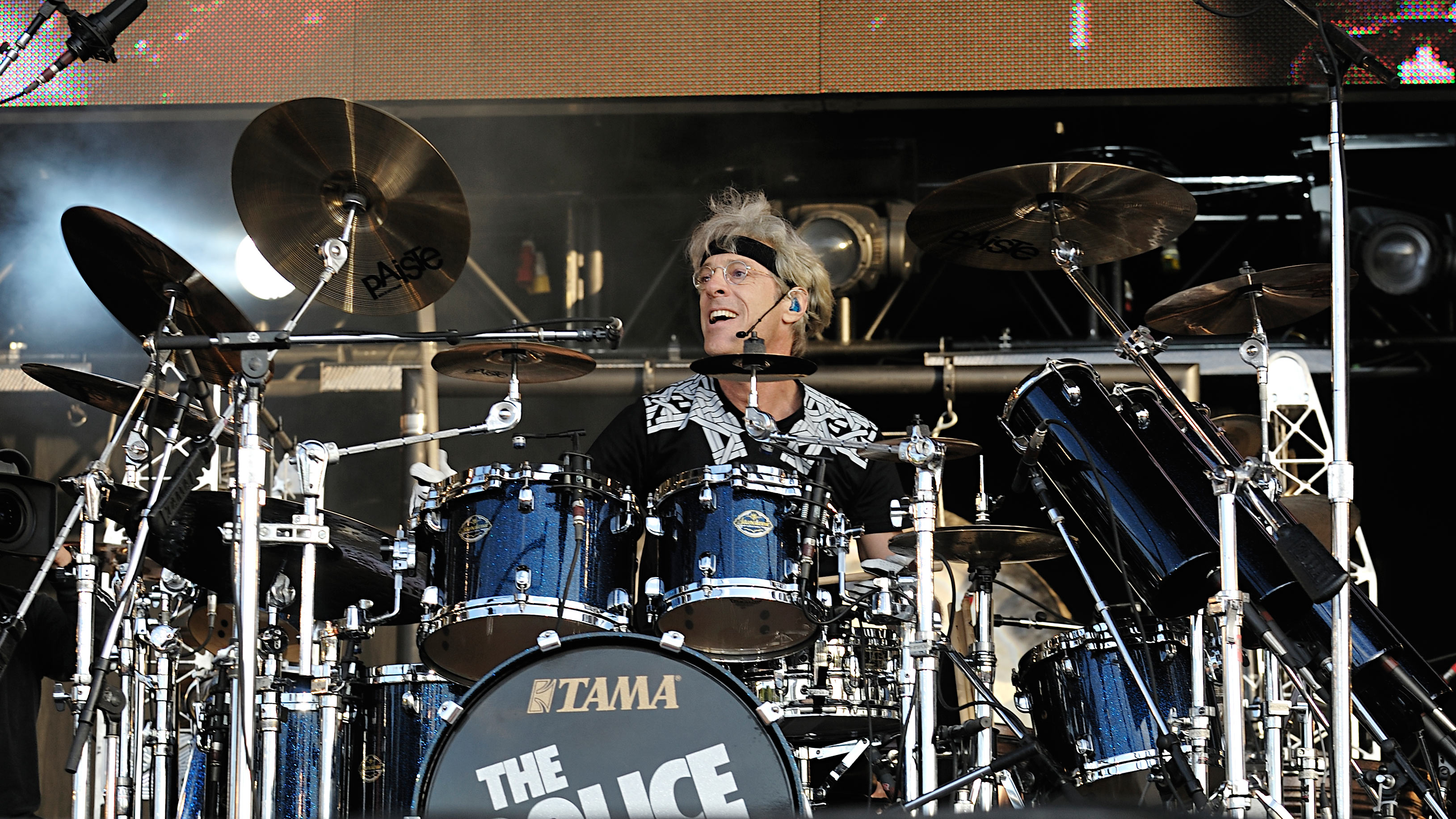How to play drums like Stewart Copeland
From cymbal accents to bass drum placement: add some reggae to your rock with these essential Copeland grooves

Stewart Copeland is undoubtably one of the most influential rock drummers of all-time. His captivating mix of rock and reggae demands the attention of drummers everywhere, and the influence is heard in everything from Deftones to Bruno Mars.
Not only that, but incorporating some of Stewart's accents and embellishments into your own grooves and fills is fun, and extremely addictive! Here, we take a look at seven of Stewart Copeland's often-used concepts to get you started.
Hi-hat embellishments
Possibly the key drum kit voice in Stewart’s playing is the hi-hat where his touch and use of accents and embellishments make it a highly expressive part of the kit. The examples in the three bars below shows a Steppers groove.
First is a simple accent which just lifts the end of the bar. Next is a sixteenth-note right/left/right sticking. And finally the third bar shows a sixteenth-note triplet right/right/left/right figure.

Splash Accents
From the very early days of The Police Stewart made use of splash cymbals and octobans. And whilst the two sounds didn’t appear on many of the band’s mainstream hits Stewart would frequently incorporate them live.
This four-bar example is similar to how Stewart approaches the verse of ‘Spirits In The Material World’ live, alternating between the splash cymbal and octoban.

Cross-sticking


Stewart’s playing would frequently utilise the cross-stick sound, interestingly sometimes played lifting the hand completely off the drum to slam it hard into the drum for a stronger sound. These two examples show two related cross-rhythmic patterns where the left hand plays a dotted eighth-note rhythm.
Get the MusicRadar Newsletter
Want all the hottest music and gear news, reviews, deals, features and more, direct to your inbox? Sign up here.
In Example 3A the right hand continues to play eighth-notes, whereas in Example 3B the right hand fills in two sixteenth-notes between each cross-stick.
Melodic Tom Parts
Two of the The Police’s biggest tracks feature Stewart playing a melodic tom part during the verses. On both ‘Roxanne’ and ‘Message In A Bottle’ the left hand plays an almost Mambo-esque tom pattern which moves between the mid-tom and high-tom to create a two-bar pattern.


Bass Drum Placement
The reggae-esque nature of many of The Police’s tracks allowed Stewart to get creative with his grooves, often omitting the bass drum from the beginning of the bar or simply using it very sparsely to create spacious sounding grooves but ones which still conveyed the essence of the pulse.
Example 5A is similar to the verse pattern from ‘Roxanne’ with the bass drum falling under the snare on beat 2 but playing nothing on beats 3 and 4. While Example 5B is similar to the verse groove on ‘Walking On The Moon’ with the bass drum unusually playing beats 2 and 4, notes that would typically be the ‘skank’ or upbeats in a reggae feel.


Ride Bell Accents
Stewart sometimes uses the bell of the ride cymbal to punctuate the backbeat, quickly moving right hand off the hi-hats over to the ride cymbal just when the snare drum is played. Example 6A shows this approach in a groove similar to that which appears towards the end of ‘Every Little Thing She Does Is Magic’. While Example 6B is like the build-up towards the end of ‘Message In A Bottle’.


“I’m sorry I ruined your song!”: Mike Portnoy hears Taylor Swift's Shake It Off for the first time and plays along... with surprising results
“Nile's riff on Get Lucky is a classic example of a funk riff, where the second of each 16th-note duplet is slightly delayed”: Locking down the theory of groove









